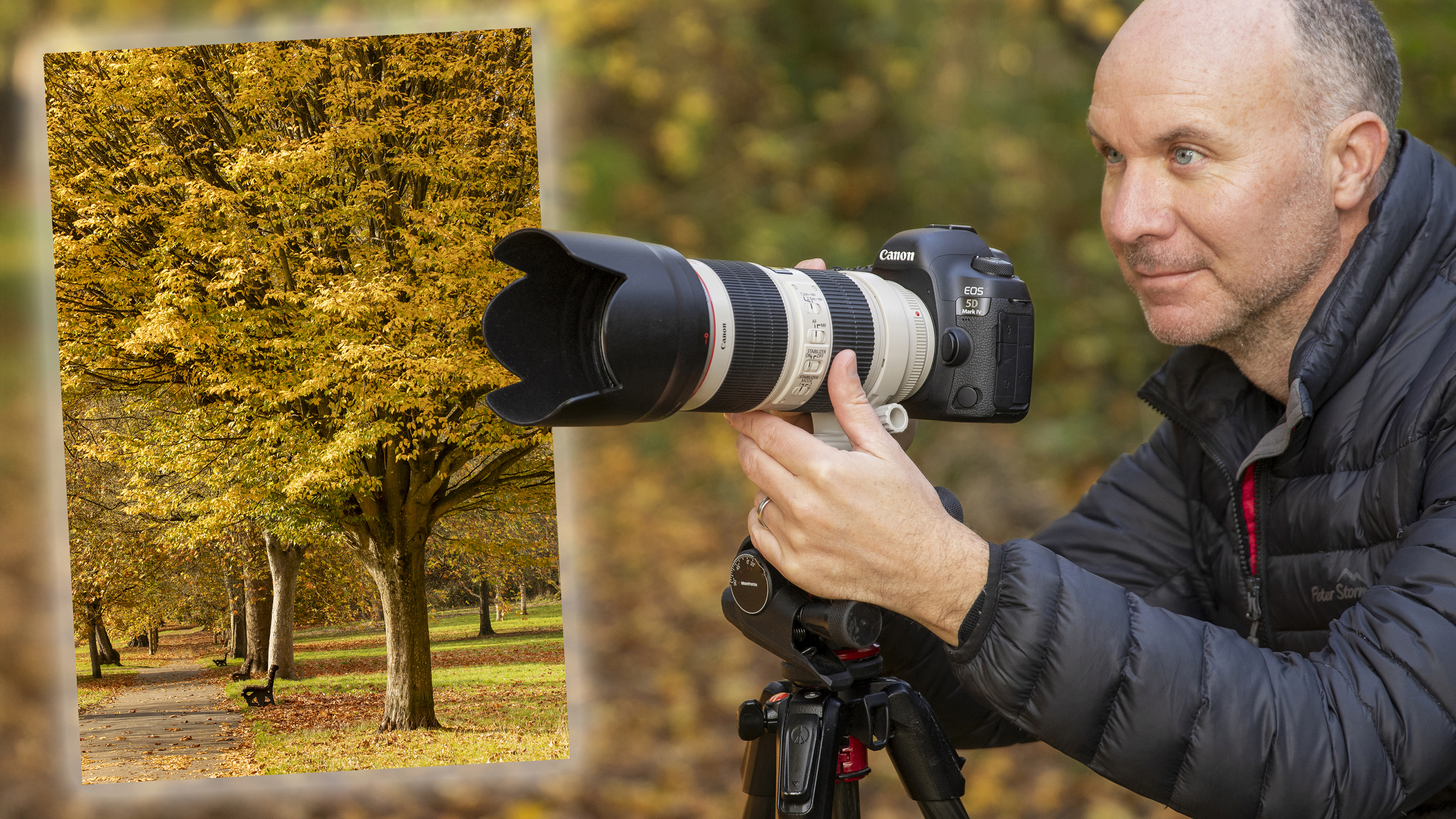
I’ve made no secret of this in the past: I’m a tree lover! I don’t mean that I go around hugging trees. I’m not a total weirdo. I just love trees and photographing them in pretty scenes, whether it’s a lone tree against a blue sky in a landscape, a silhouetted tree at sunset or lines of trees covered with colorful leaves in the fall.
But knowing how to capture those frame-filling shots of lines of trees in your local park takes, to quote Liam Neeson in Taken, requires a very particular set of skills!
Allow me to explain in the following simple steps, where I'll show you how to improve your composition skills to capture colorful frame-filling photos of trees – however old your kit!
Here's a quick video of the scene I was shooting, so you can see what I was working with:
1. Lens choice
It’s easy to think you’d use a wide-angle lens, to try to include every part of the tree from the top to the trunk. However, with a wide lens you end up with lots of empty space in the frame – and probably with tall trees ‘leaning back’ as you’ve stood too close to get your shot.
No, the trick to nailing these landscape shots is to use a long telephoto focal length. I used my trusty Canon EF 70-200mm f/2.8L IS II USM lens, as it’s the ideal telephoto zoom on my full-frame Canon EOS 5D Mark IV DSLR.
The 70-200mm f/2.8L IS II USM might be 14 years old now, but it’s still a cracking and fast telephoto zoom lens. It’s reliable and sharp as a tack.
But rather than stand close and shoot at 70mm, you want to stand further back and zoom in to shoot at nearer the 200mm end for a better composition full of the beautiful branches, chunky tree trunks and the ground hopefully covered in gorgeous leaves.
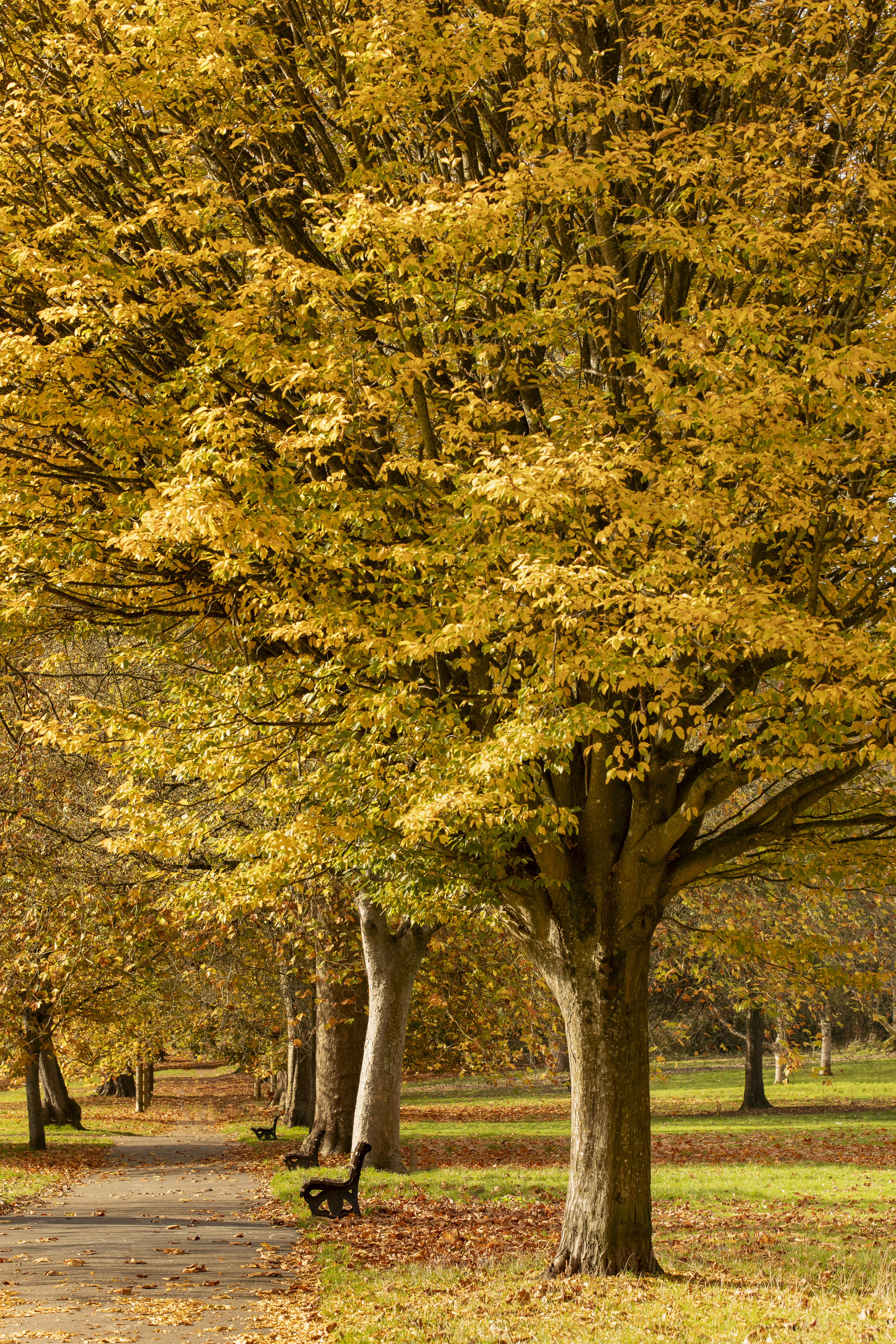
2. Change your perspective
So why use a telephoto lens? A telephoto focal length compresses perspective, which means rgar it pulls elements in your scene closer together. In layman’s terms, it means that your frame will be more densely packed with colors, and lines of trees will appear closer together for a better composition.
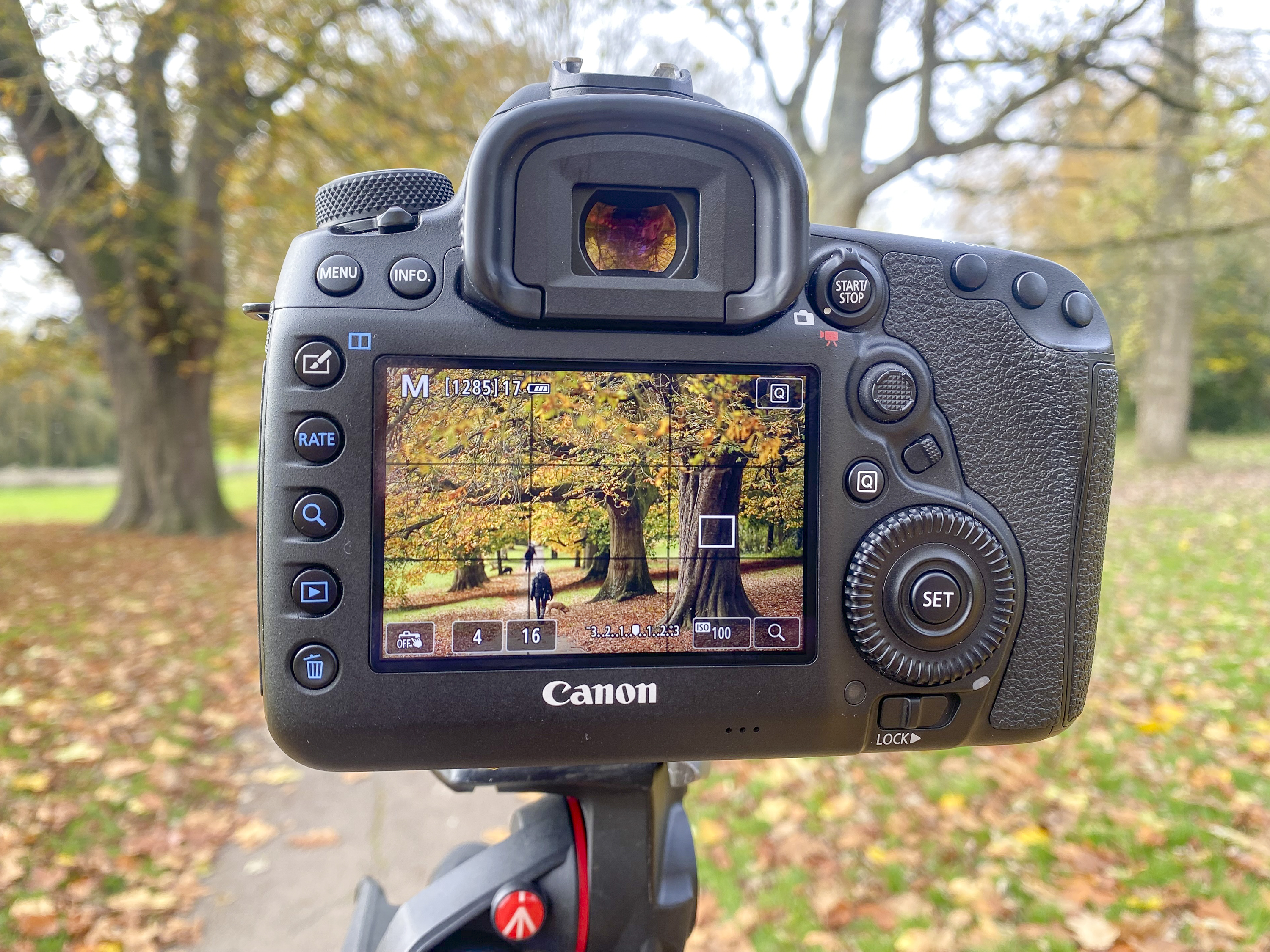
3. Adjust aperture for more depth of field
It’s also easy to make the mistake of going on autopilot with the aperture when using fast 70-200mm f/2.8 zooms, and shooting wide open at f/2.8. But I want good depth of field, so I was using a narrow aperture between f/11 and f/16. These are often a lens’ optimal apertures for sharpness from center to corners, too.
With lower light levels at this time of year, you’ll find that you end up with a naturally slow shutter speed when shooting at f/16 and ISO100, around 1/15 to 1/40 sec. This had the added bonus of blurring out people walking on any paths in your shot.
Also use a tripod to ensure that your shots are a) straight, and b) sharp whatever your shutter speed, and so that c) you can fine-tune your framing. But avoid attaching your camera to the tripod head, as it won’t be safe with a heavy telephoto zoom on the front, and will likely dip forwards at best.
Most bigger 70-200mm f/2.8 lenses have a collar where you can screw in the base plate for your tripod head instead.
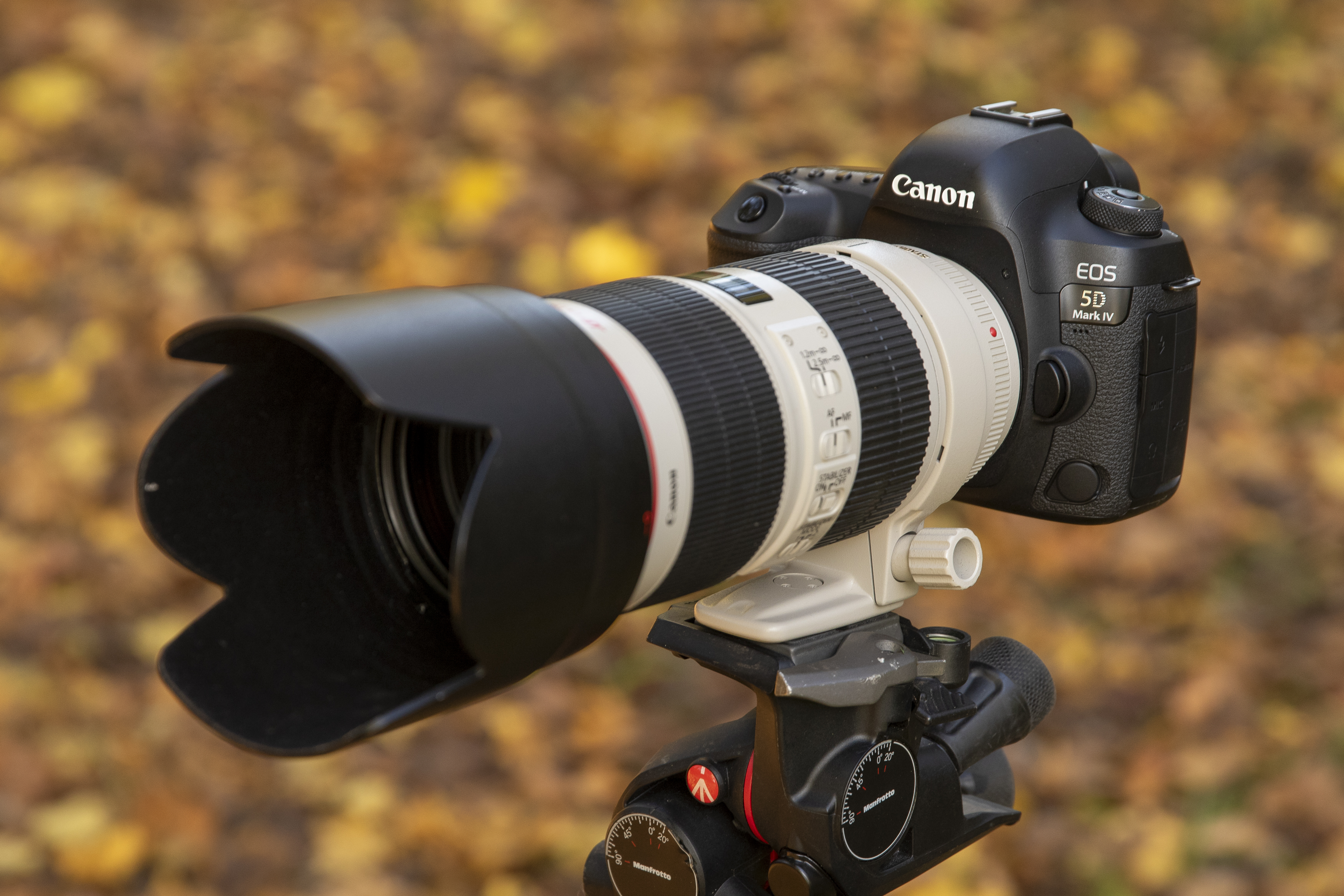
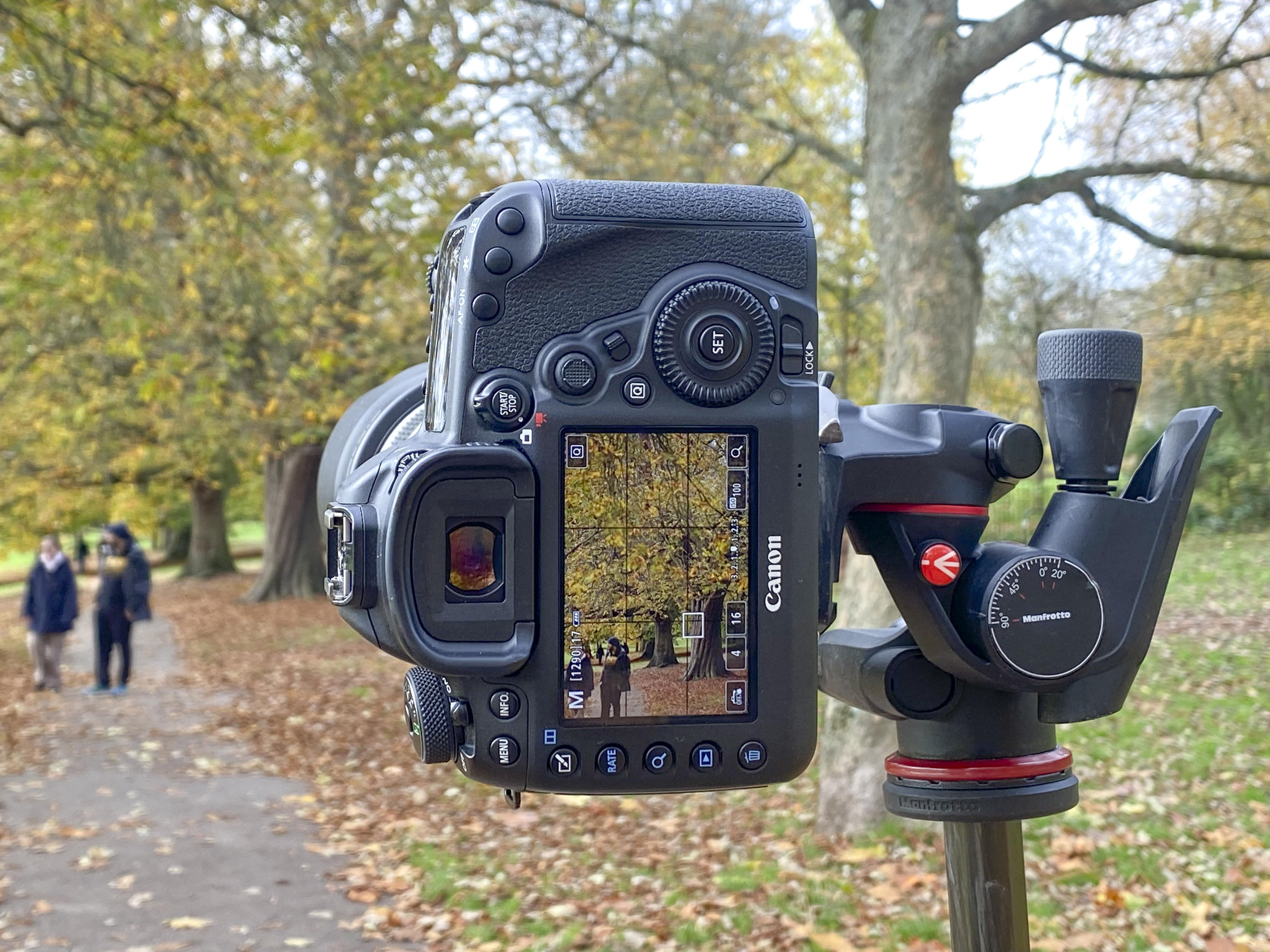
4. Work on your compositions
Composition is the key element for these photos. For a start, vertical compositions usually work better to include more colorful trees. If you’re blessed with trees full of colorful leaves running down both sides of the path in your park, you may want to go for a symmetrical shot, with the path running down the middle.
I like to frame up these shots so that a large tree with colorful leaves is most prominent and to one side in the frame, cropped off on the top and sides, and without too much empty space in the foreground. Meanwhile the path in the park is running down from the top to the bottom of the frame, to lead the eye into the photo. Focus about a third of the way into the scene for good sharpness.
Also make sure that you use your camera’s electronic level, so your trees stand straight and your horizons are level. As I get all nerdy in my opinion piece – the electronic level on Canon DSLRs like my EOS 5D Mark IV is much bigger and easier to use on-screen, compared to smaller levels on mirrorless Canon cameras.
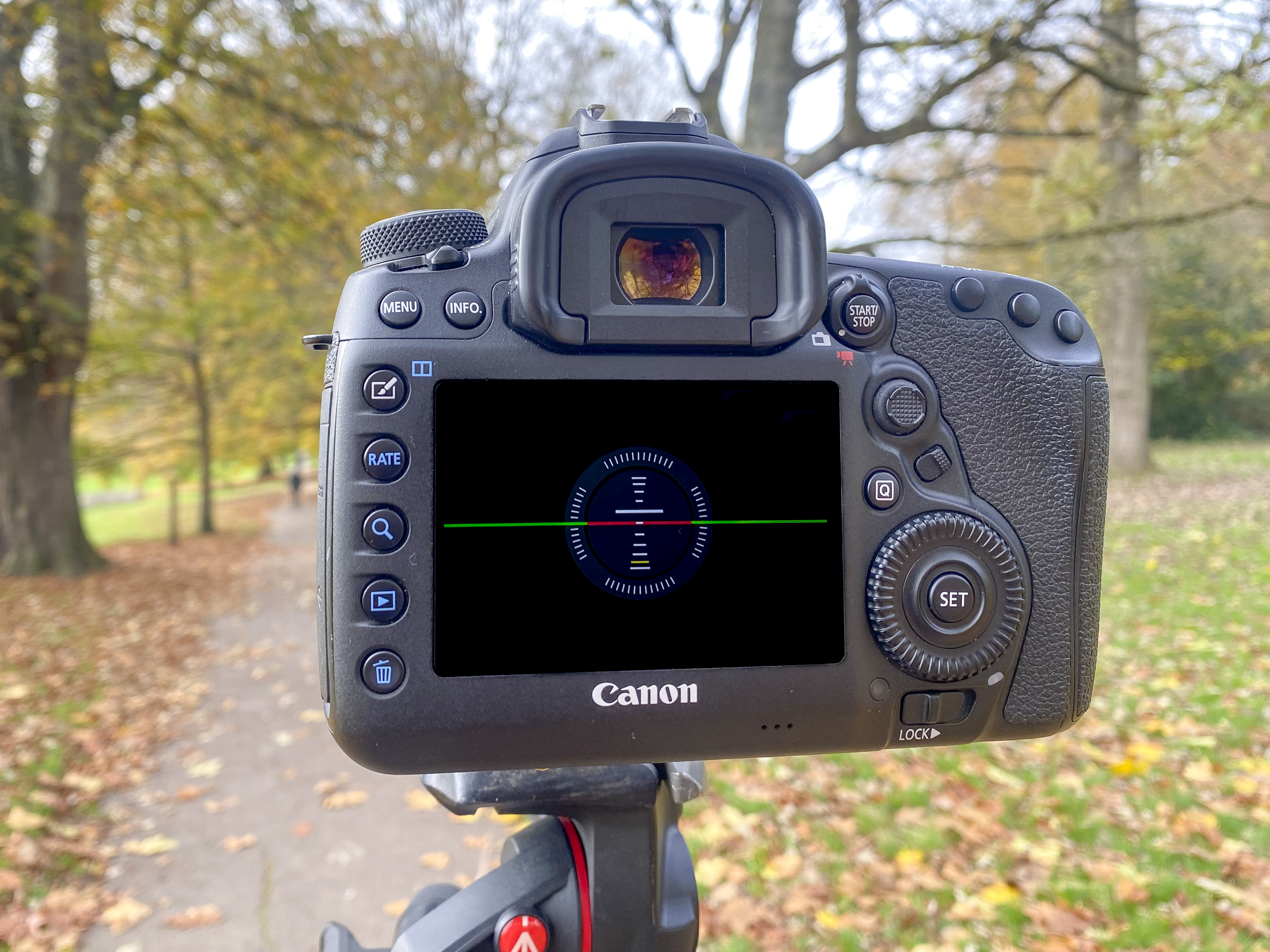
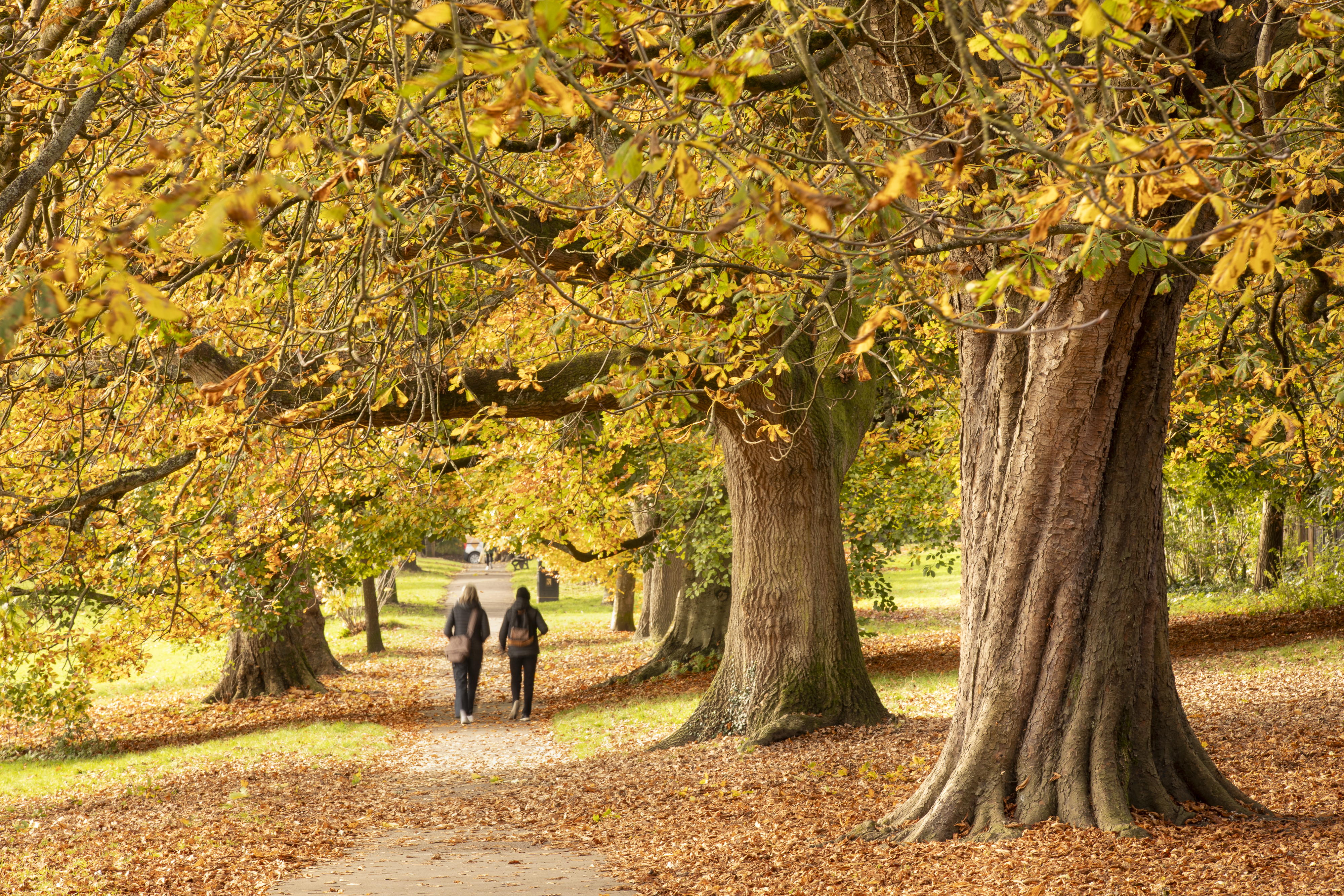
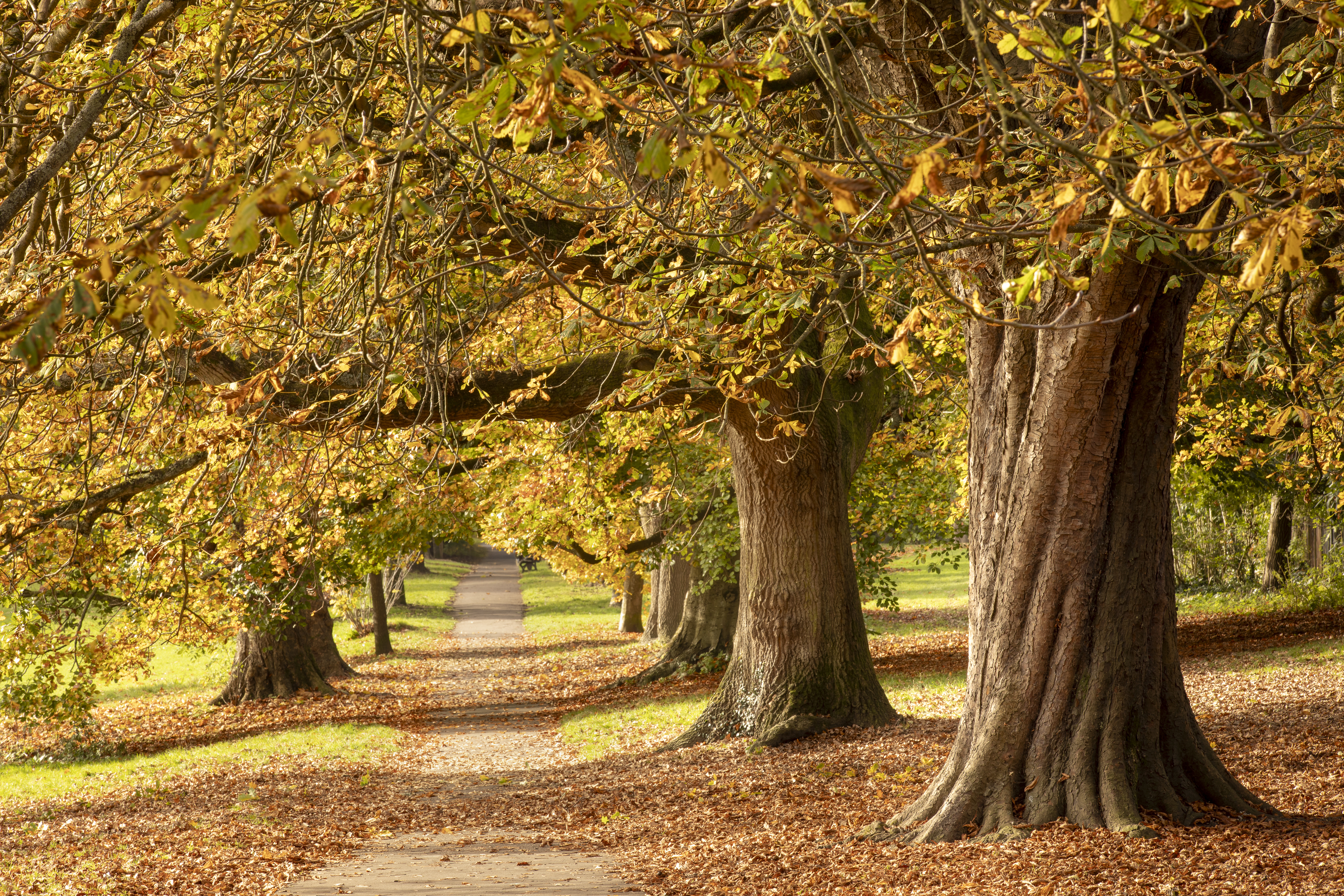
5. Clear views
It was then a waiting game to get a clear shot when the majority of walkers and runners had gone out of view in the big park in central Bath, England, that I’d chosen for these fall photos.
You may prefer your autumn tree-line shots to have one or two people walking on the path, to add a sense of scale or to add a bit of life to the shots. It’s a personal preference.
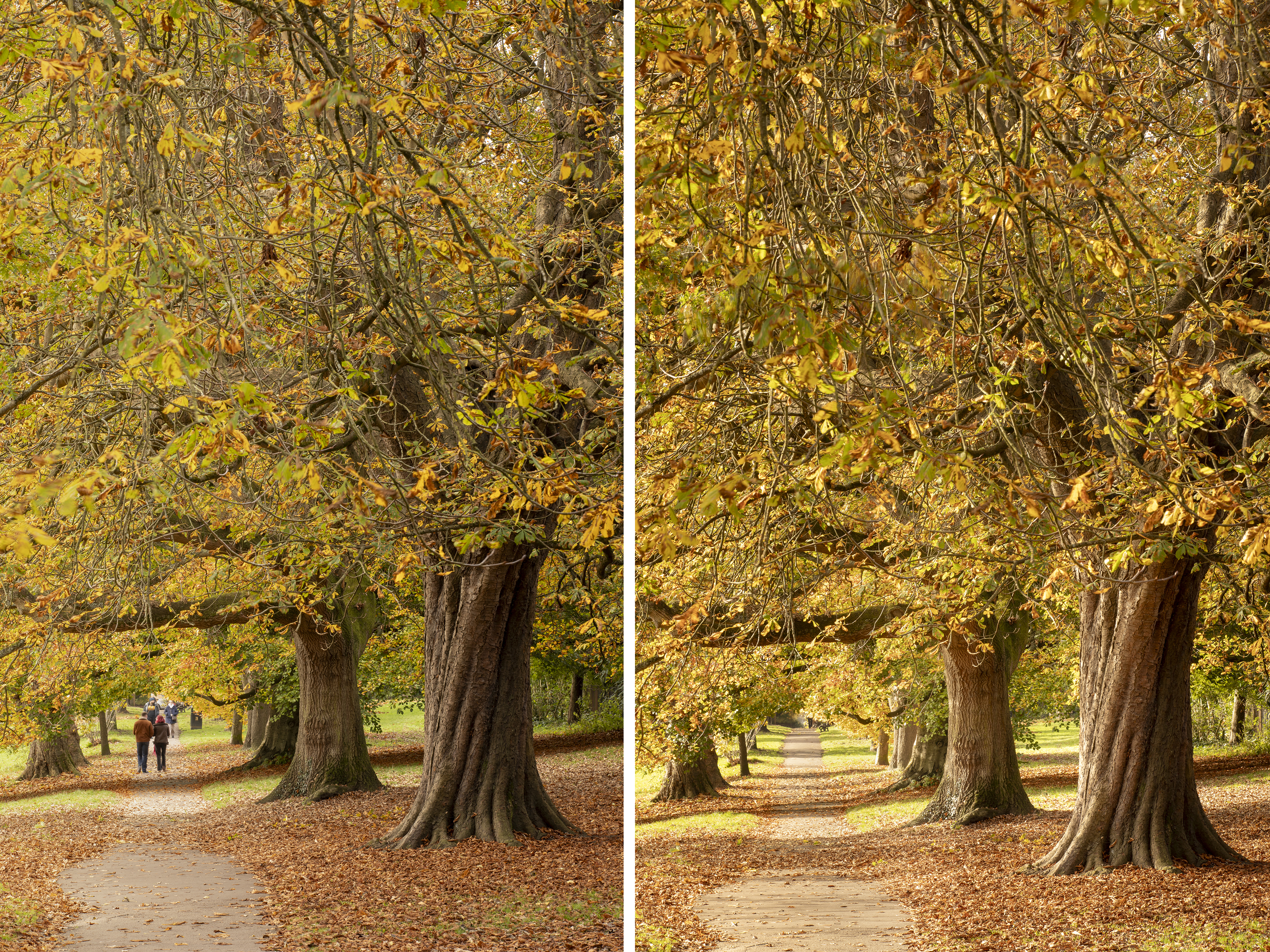
6. What light is best?
You don’t necessarily need strong sunlight for these shots. In fact, although I waited for the sun to peak out behind the clouds to light up the trees, I found strong sunshine created too many shadows for my shots. So overcast conditions are fine, almost better, as the softer daylight will light the scene evenly, without unwanted dark shadows.
You also won’t have to worry about the sky in your shots, as your composition will be tight with the frame filled with autumn colors.
To emphasize the autumnal hues, a quick tip is to simply use the Cloudy or Shade white balance preset on your camera to warm up your images.
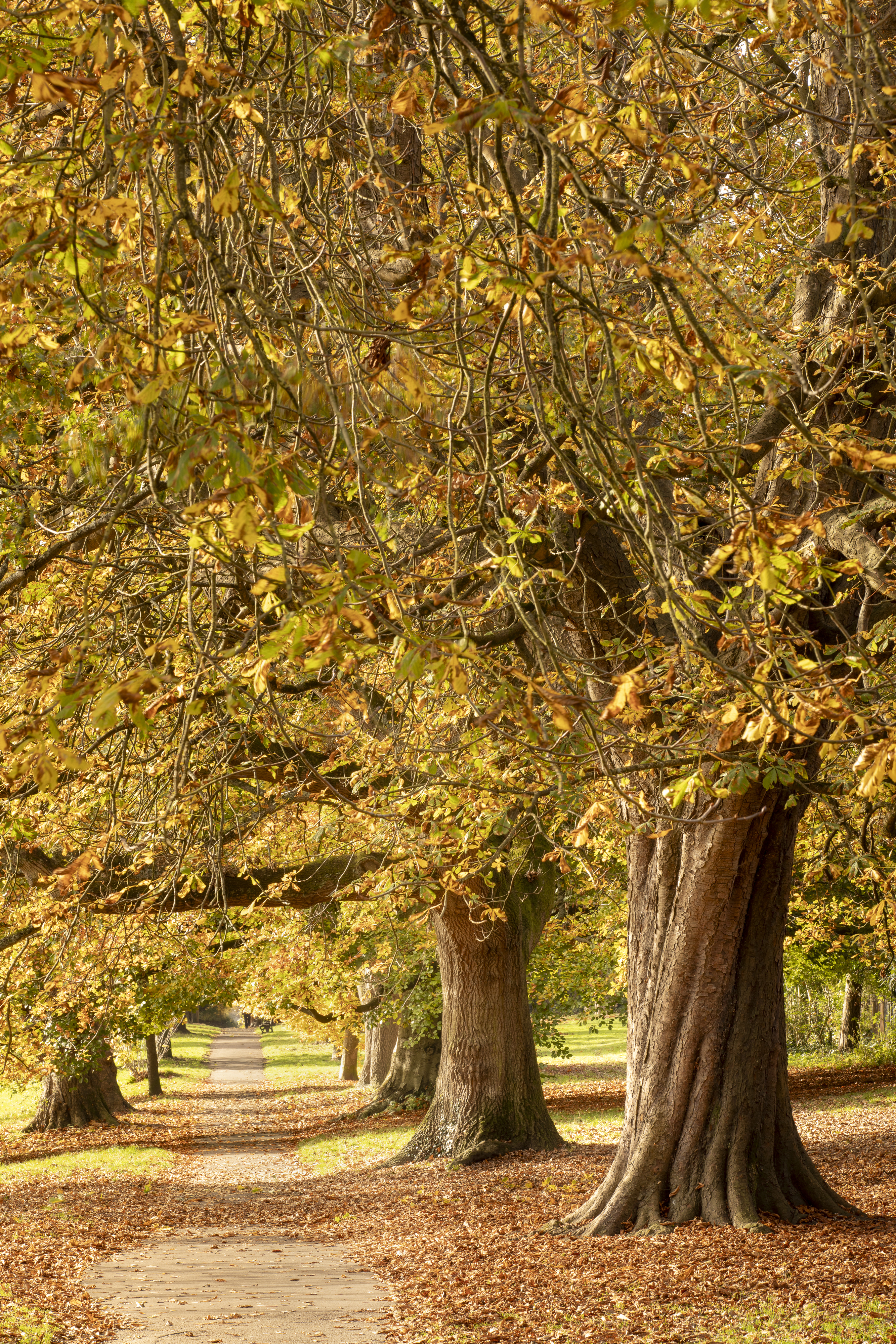
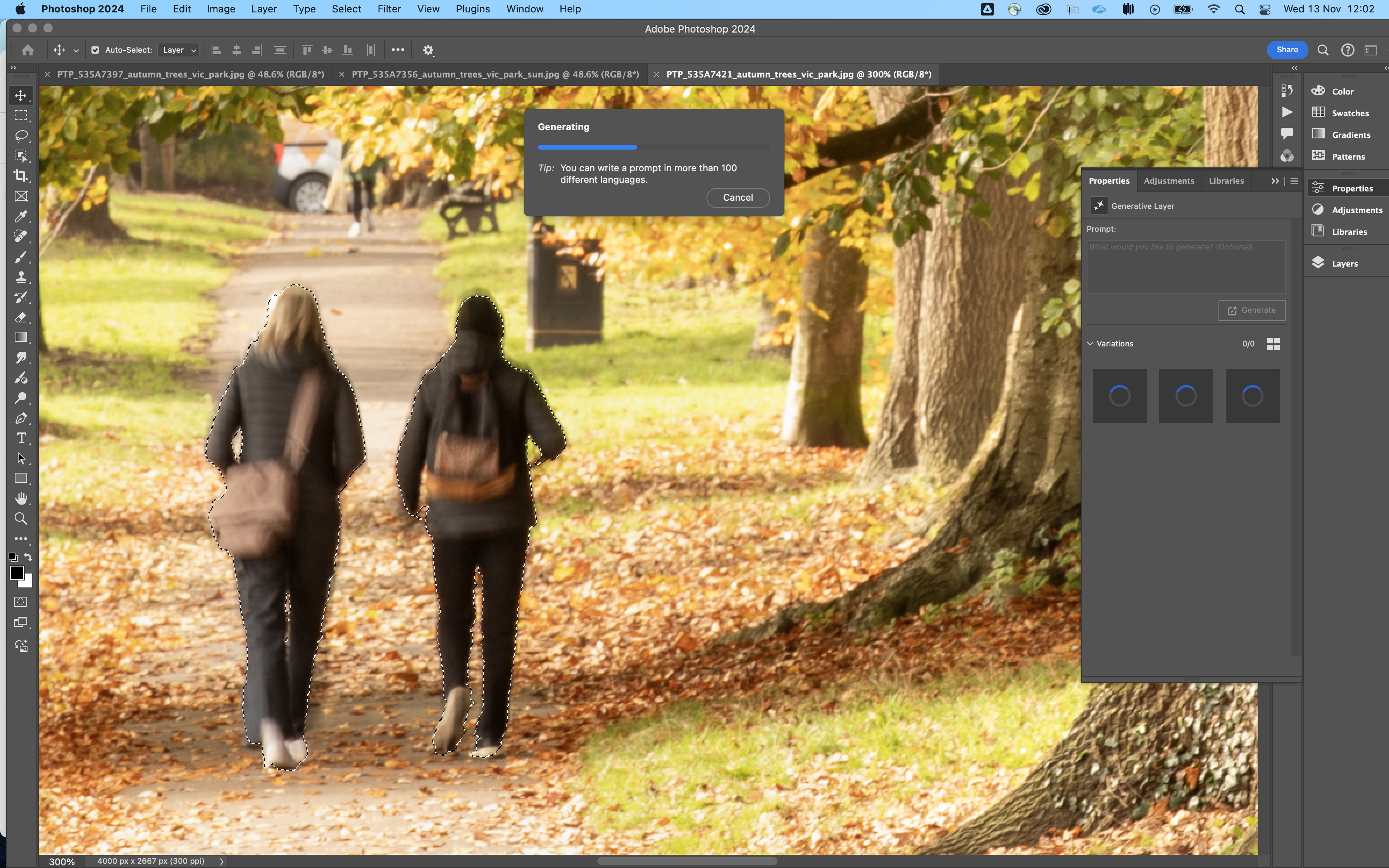
7. Warm up your fall images
When editing my RAW images, I boost exposures, shadows and highlights, and adjust Dehaze in Adobe Camera Raw. I also tweaked the color temperature slider (white balance) to subtly warm up images a little more.
In Photoshop CC I also removed the odd distraction such as bins, man-made posts and any people. Rather than getting busy with the Clone Stamp Tool or Spot Healing Brush tool, I found the quickest and best way was to use the Object Selection Tool for a quick selection, then Generative Fill AI to do the dirty work.
You might be interested in the best Canon cameras, along with the best Canon lenses for DSLRs and the best Canon RF lenses for mirrorless.







